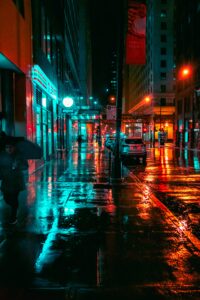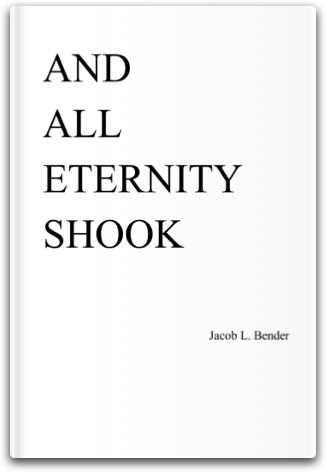
Review: MERCY, by John Cale
The Welsh iconoclastic John Cale has spent virtually his entire career better known for his influence than his music. Co-founder of The Velvet Underground (always
Ships of Hagoth is a digital-first literary magazine featuring creative nonfiction and theoretical essays by members of the Church of Jesus Christ of Latter-day Saints. Where other LDS-centric publications often look inward at the LDS tradition, we seek literary works that look outward through the curious, charitable lens of faith.
Ships of Hagoth is pleased to announce its first book-length message in a bottle, AND ALL ETERNITY SHOOK, by
Jacob Bender, released April 2022.
Jacob L. Bender is also the author of Modern Death in Irish and Latin American Literature (Palgrave Macmillan, 2020), a work similarly rooted in his Puerto Rican mission service and his mother's passing. In LDS studies, he has previously written for Dialogue, Sunstone, Peculiar Pages, Ships of Hagoth, the Eugene England Foundation, and The Association of Mormon Letters.

Enraged, he wrestles with his God in passionate prayer as he pleads for her life; images and memories of his mission and his Mom jump, cut, and splice together in a cinematic crescendo, flashing furiously before his eyes as though he were the one dying and not her; all as he feels after some miracle, some impossibility, and the peace which surpasses understanding.
Whether you’re an interested writer or reader, subscribe below and we’ll keep you in the loop.
A CALL FOR
We are hoping—for “one must needs hope”—for creative nonfiction, theoretical essays, and craft essays that seek radical new ways to explore and express theological ideas; that are, like Hagoth, “exceedingly curious.”
We favor creative nonfiction that can trace its lineage back to Michel de Montaigne. Whether narrative, analytical, or devotional, these essays lean ruminative, conversational, meandering, impressionistic, and are reluctant to wax didactic.
As for theoretical essays: we welcome work that playfully and charitably explores the wide world of arts & letters—especially works created from differing religious, non-religious, and even irreligious perspectives—through the peculiar lens of a Latter-day Saint.
We read and publish submissions as quickly as possible, and accept simultaneous submissions.

The Welsh iconoclastic John Cale has spent virtually his entire career better known for his influence than his music. Co-founder of The Velvet Underground (always
I am still processing my grief at the recent passing of Low, whom I have previously argued was secretly the most Mormon band to ever exist, in all the best ways possible. So, I created this album guide.

In memoriam Tom Verlaine (1949-2023).

One’s a curiosity, two’s a coincidence, but three’s a full-blown trend: when not one, not two, but three separately and independently produced films about the RoboApocalypse debut at the same film festival, then you know for sure that’s something’s in the water, something’s just floating in the air, that is making audiences anxious about the rise of AI.

Essaying to escape the predictive algorithm all while never evading the eye of the Almighty.
I initially started reading Charlotte Bronte’s Jane Eyre more out of sense of English majory duty than anything else, honestly; I’d somehow completed a Masters

Here we are, born to be kings…

Having children myself has really made me meditate on what exactly Christ meant that we must “be as little children” if we are to inherit
I had a minor Christmas miracle last month: while poking around my Dropbox for some forgotten reason, I stumbled upon the Bittorrent for the “despecialized”
Out here in the fields…
Whether you’re an interested writer or reader, subscribe below and we’ll keep you in the loop.